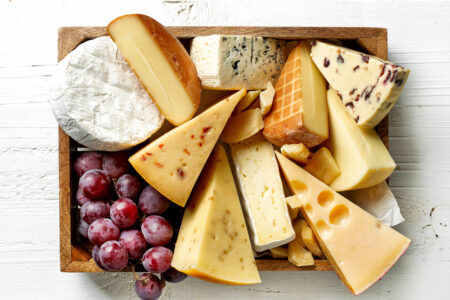The critical pieces

Sustainability continues to be a top priority globally, so the way milk is produced is becoming as important as the products made from them. Normally we don’t discuss up the supply chain too much on the blog, but a couple of supply-related events caught my eye this week.
The first was the two cows falling into the water in Rotterdam, the Netherlands, where the first floating urban dairy farm is located and has been opering since 2019. The cow being winched out of the water does not look impressed in the photo on Farminguk.com. The second was that the director of Avatar, James Cameron, is said to have quietly turned his organic vegetable farm, which he bought from a dairy farmer in New Zealand several years ago, back into grazing for cattle.
The first item shows that you can never tell with animals. I do not know how the cows wound up in the drink, but shifting them back and forth across gangplanks is well, a tricky business. I like the idea behind urban centres providing their own supply for feeding the population, but as we all march towards the future of farming, there are bound to be a few animals falling into the water, especially as the level rises over the years. It is something to think about. I am happy it’s the Dutch who are doing this – they know a lot about dealing with both rising water levels and cows. The expertise will benefit us all.
The second item is a bit of a funny one, and it’s really about using the land most productively to feed a growing population. People like to say that turning over all the animal-based pasture to crop agriculture will be the way forward. But as any farmer will tell you, that just isn’t so.
As you remove animals from the land, and turn over that soil for crops, you are destabilizing it. Now, in soils like my allotment, that’s not an issue. I plant, I add compost, I go from there. But if you do that with land that is already not the most stable (say, grasslands), you’re just inviting poor conditions. A lot of grassland really isn’t great for growing anything but grass, and a lot of fertilizer may have to be added to grow them. Thin topsoil blows away. Also, where does that fertilizer come from, if you take animals out of the equation? Putting cows on grassland makes more sense. They take the nutrients from the grass but leave the ground structures intact.
I am sure there are simulators, and I know there are people who are more knowledgeable than me discussing this whole very complex process (www.un.org/en/food-systems-summit). What is interesting about all of this is it’s a bit like playing Jenga. You never know how removing one piece is going to make the whole thing collapse.
- Suzanne Christiansen, editor, Dairy Industries International.
Keep in touch via email: [email protected]
Twitter: @dairyindustries or LinkedIn: Dairy Industries International magazine.




Thought provoking in an imaginative way – Thanks…